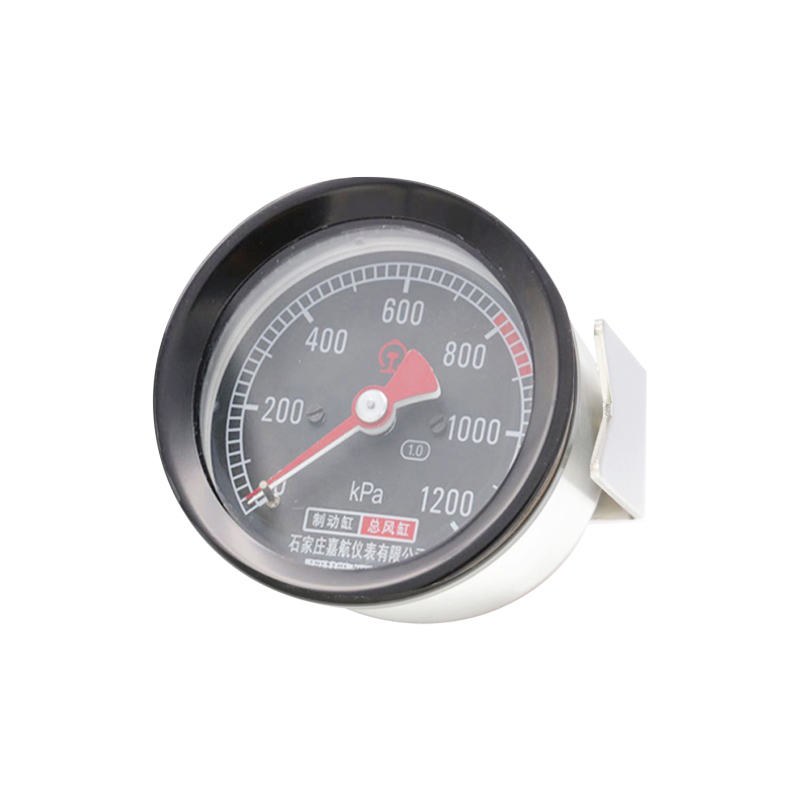
Aug . 05, 2024 09:20 Back to list
Liquid-Filled Differential Pressure Gauges for Accurate Measurement in Industrial Applications and Processes
Understanding Liquid-Filled Differential Pressure Gauges
Differential pressure gauges are crucial instruments in various industrial applications where monitoring the difference in pressure between two points is essential. Among the different types of differential pressure gauges, liquid-filled versions stand out due to their reliability and accuracy, particularly in harsh environments. This article explores the features, benefits, applications, and maintenance of liquid-filled differential pressure gauges.
What is a Liquid-Filled Differential Pressure Gauge?
A liquid-filled differential pressure gauge is a specialized device designed to measure the pressure difference between two points in a system. Unlike traditional gauges that are filled with air, liquid-filled gauges use a fluid—typically glycerin or silicone oil—to dampen the vibrations and reduce the effects of pulsation. This liquid filling not only stabilizes the readings but also provides protection against environmental factors.
Benefits of Liquid-Filled Differential Pressure Gauges
1. Dampening of Vibrations and Pulsations One of the primary advantages of liquid-filled gauges is their ability to dampen pressure fluctuations caused by rapid changes in the system or external vibrations. This leads to more stable and accurate readings, which are vital in processes where precision is critical.
2. Enhanced Protection The liquid filling offers a layer of protection against contaminants and dust, making these gauges ideal for use in aggressive environments. This protective feature extends the life of the gauge and reduces the need for frequent replacements.
3. Wide Temperature Range Liquid-filled gauges can operate effectively over a wide range of temperatures. The choice of liquid can be tailored to the application, making it suitable for high-temperature processes without risking damage to the gauge.
4. Ease of Installation and Readability These gauges usually come with clear and easily readable dials, making it simple for operators to monitor pressure levels at a glance. Additionally, they are straightforward to install in various configurations, be it horizontal or vertical.
Applications of Liquid-Filled Differential Pressure Gauges
Liquid-filled differential pressure gauges are widely used across various industries, including
- Chemical Processing In chemical plants, these gauges help monitor pressures in reactors, distillations columns, and other critical equipment. Their robust design ensures accuracy even in corrosive environments.
liquid filled differential pressure gauge product

- Water and Wastewater Treatment These gauges assist in monitoring filter pressure drops and other critical points within water treatment systems, leading to efficient operations and maintenance.
- HVAC Systems In heating, ventilation, and air conditioning systems, liquid-filled differential pressure gauges measure the pressure drop across filters and coils, which is essential for system performance and energy efficiency.
- Pharmaceutical Manufacturing The precision required in this industry makes liquid-filled gauges the preferred choice for monitoring pressure in various processes, ensuring compliance with stringent regulations.
Maintenance Considerations
To ensure the longevity and reliability of liquid-filled differential pressure gauges, regular maintenance is essential. Here are some maintenance tips
1. Periodic Calibration Regular calibration ensures that the gauge readings remain accurate over time. This is particularly important in industries where precision is critical.
2. Visual Inspection Inspect the gauge for any signs of leakage, cracks, or damage to the face. Any such issues should be addressed immediately to prevent erroneous readings.
3. Fluid Level Check Ensure that the liquid inside the gauge remains at the appropriate level. Low or contaminated fluid can affect the gauge's performance.
4. Temperature Monitoring Be aware of the operating temperature conditions. Extreme temperatures can affect the viscosity of the filling liquid, potentially compromising accuracy.
Conclusion
Liquid-filled differential pressure gauges are indispensable tools in many industries, providing reliable, accurate measurements under challenging conditions. Their unique features, such as vibration dampening and enhanced protection, make them a preferred choice for various applications. By adhering to maintenance best practices, users can ensure these gauges continue to perform effectively, thereby enhancing operational efficiency and safety.
-
High-Precision 5 Valve Manifold Differential Pressure Gauge Suppliers
NewsApr.29,2025
-
High-Precision Diaphragm Vacuum Pressure Gauges Manufacturers & Quotes
NewsApr.29,2025
-
Omega Differential Pressure Gauges High Accuracy & Durability
NewsApr.28,2025
-
Low Pressure Differential Pressure Gauges Precision Solutions & Quotes
NewsApr.28,2025
-
Digital Diaphragm Pressure Gaauge Precision Measurement & OEM Quotes
NewsApr.28,2025
-
Differential Pressure Gauge China Price High-Accuracy & Best Quotes
NewsApr.28,2025
